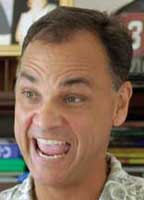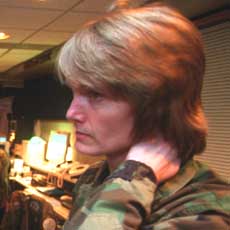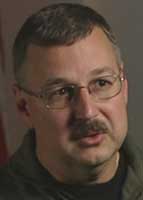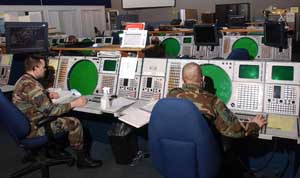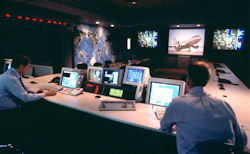 American Airlines' System Operations Command Center. [Source: American Airlines] | American Airlines managers activate the System Operations Command Center (SOCC) in order to manage the company's response to the terrorist attacks. [9/11 Commission, 1/27/2004; 9/11 Commission, 8/26/2004, pp. 12] The SOCC is a dedicated crisis response facility located on the floor above, and overlooking, the American Airlines System Operations Control (SOC) center in Fort Worth, Texas. [9/11 Commission, 11/19/2003 pdf file; 9/11 Commission, 1/27/2004] Activating the command center allows the airline to isolate an event and gather together the people needed to manage it. [9/11 Commission, 1/7/2004 pdf file] The SOCC is activated in emergencies, such as major accidents and hijackings, during which the airline's top operations officials assemble there. Craig Parfitt, the managing director of dispatch operations, and Joseph Bertapelle, the manager of SOC operations coordination/air traffic systems, will serve as its directors today. [USA Today, 8/13/2002; 9/11 Commission, 11/19/2003 pdf file] |
Accounts Unclear over When SOCC Is Activated - The exact time when the SOCC is activated is unclear. Gerard Arpey, American Airlines' executive vice president of operations, will tell the 9/11 Commission that when he arrives at the SOC, between around 8:35 a.m. and 8:40 a.m. (see (8:30 a.m.-8:40 a.m.) September 11, 2001), he sees that Parfitt, Bertapelle, and Kyle Phelps, the manager of administration for the SOC, are setting up the SOCC. By around 8:45 a.m. or 8:50 a.m., according to Arpey, the command center is filling up with people. [9/11 Commission, 1/8/2004 pdf file; 9/11 Commission, 1/27/2004] But Parfitt will indicate that the SOCC is activated slightly later. He will tell the 9/11 Commission that it is being set up after the airline's 8:45 a.m. conference call (see 8:45 a.m. September 11, 2001) and that senior managers, including himself, arrive there at around 8:55 a.m. Craig Marquis, the manager on duty at the SOC, will say that at about 8:50 a.m., he looks up and notices activity in the SOCC. [9/11 Commission, 11/19/2003 pdf file] The SOC manager is the individual responsible for activating the SOCC, according to a 9/11 Commission memorandum. However, it is unclear whether Marquis makes the decision to activate the command center on this occasion. [9/11 Commission, 11/19/2003 pdf file] Airline's Key Decisions Made in the SOCC - The SOCC will be primarily responsible for dealing with the crisis. [9/11 Commission, 4/26/2004 pdf file] The key decisions on the airline's immediate response to the hijackings will be made there. American Airlines employees in the command center will provide assistance to the FBI and other law enforcement agencies involved in investigating the attacks. The SOCC will remain open 24 hours a day for the next two weeks. [9/11 Commission, 11/19/2003 pdf file; 9/11 Commission, 1/27/2004] |
